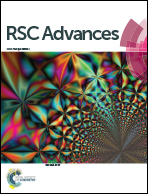Capacity detection of electric vehicle lithium-ion batteries based on X-ray computed tomography
Abstract
It is difficult to use conventional capacity detection methods to determine nondestructively and rapidly the capacity of lithium-ion (Li-ion) batteries used in electric vehicles. To resolve this problem, lithium iron phosphate (LFP) batteries are regarded as research objects for studying the relationship between their electrochemical performances and the structural parameters of their active materials based on Faraday's law. Therefore, a capacity detection method based on X-ray computed tomography is proposed; it combines the battery's electrochemical performance testing techniques and tomographic measurement techniques to measure the electrochemical properties and structural parameters of active materials of Li-ion batteries. The results show that (1) the capacity of a Li-ion battery is a function of the structural parameters of active materials and working condition; (2) the influence of the working condition on the capacity gradually changes with the change in the structural parameters of the active material; and (3) the loss of strong active materials of a Li-ion battery in the negative cross-section is more than that in the positive cross-section when the capacity decays. Owing to its advantages of being nondestructive and rapid, this method is superior compared with conventional methods.



 Please wait while we load your content...
Please wait while we load your content...